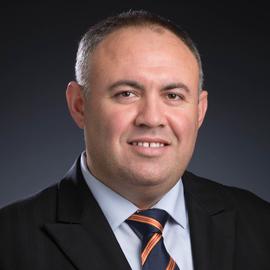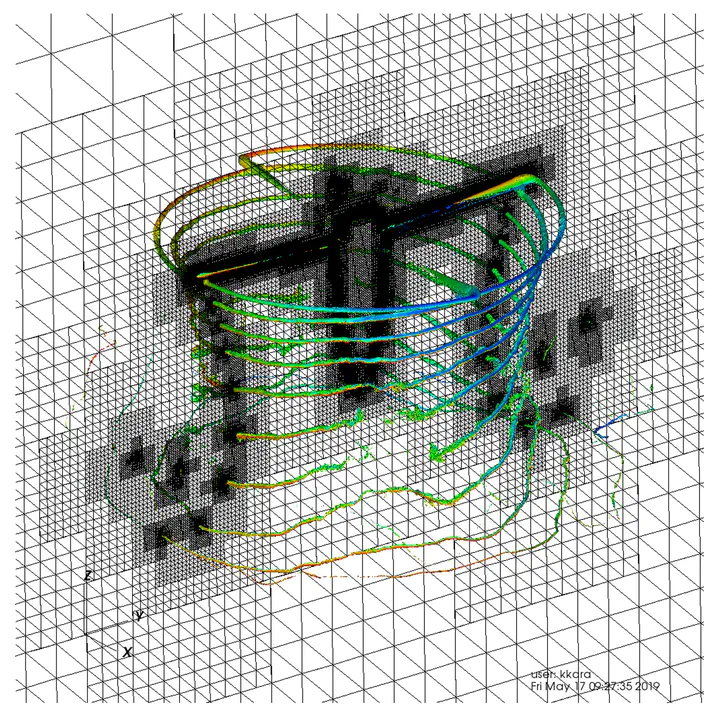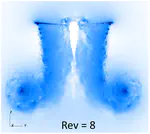The hover performance of a four-bladed Sikorsky S-76 rotor is studied using a high-order discontinuous Galerkin (DG) off-body discretization. Time accurate Navier-Stokes calculations are performed using the WAKE3D code, which combines solution technologies in a multi-mesh, multi-solver paradigm through a dynamic overset framework that employs an unstructured mesh Navier-Stokes method as a near-body solver and a high-order adaptive discontinuous Galerkin discretization as an off-body solver. The rotor with a swept-tapered tip is simulated. The tip Mach number was 0.65, and the Reynolds number based on the reference chord is 1.2 million. A constant coning angle of 3.5-degrees is applied. The effect of time step size and sub-iterations on the integrated parameters is investigated and convergence results are presented. The effect of the maximum order of accuracy of the adaptive h-p discretization in the off-body solver on solution accuracy and efficiency is also investigated. Thrust coefficient, torque coefficient, and figure of merit are calculated and compared with available data in the literature, and good agreement is found. In general, higher-order off-body simulations are found to result in a better accuracy/cost metric.

Kursat Kara
Associate Professor, Mechanical and Aerospace Engineering
Kursat Kara is an Associate Professor of Mechanical and Aerospace Engineering at Oklahoma State University and principal investigator of the Kara Aerodynamics Research Laboratory. His research spans hypersonic boundary-layer physics, unsteady aerodynamics, and the emerging interface of quantum computing and fluid dynamics. A dedicated educator and mentor, he teaches core and advanced courses—including Fundamentals of Aerodynamics, Computational Fluid Dynamics, Boundary-Layer Theory and Transition, and Quantum Computing—and supervises graduate and undergraduate projects in high-fidelity simulation and data-driven modeling. His work has been funded by NASA, NSF, Oklahoma NASA-EPSCoR, NAVAIR, ANSYS, and IBM Quantum. In 2025, he received the CEAT Excellent Faculty Award and was nominated for both the 2024 Excellent Teacher Award and the 2025 Excellent Faculty Award by OSU’s School of Mechanical and Aerospace Engineering. Dr. Kara earned his Ph.D. from Old Dominion University with a dissertation on hypersonic boundary layer receptivity to acoustic disturbances. He began his career as a research engineer at New England Analytics (supporting Sikorsky Aircraft), then completed a post-doctoral appointment at Penn State in hot jet simulations for aeroacoustics. In 2010, he helped establish the Aerospace Engineering Department at Khalifa University—where he won the President’s Faculty Excellence Award for Outstanding Teaching in 2015—before joining OSU. An active member of AIAA and APS, he served on the AIAA Applied Aerodynamics Technical Committee (2012–2021) and chaired/co-chaired multiple AIAA conferences. He also sits on the editorial board of Nature Scientific Reports and guest-edits its Quantum Computing collection.

